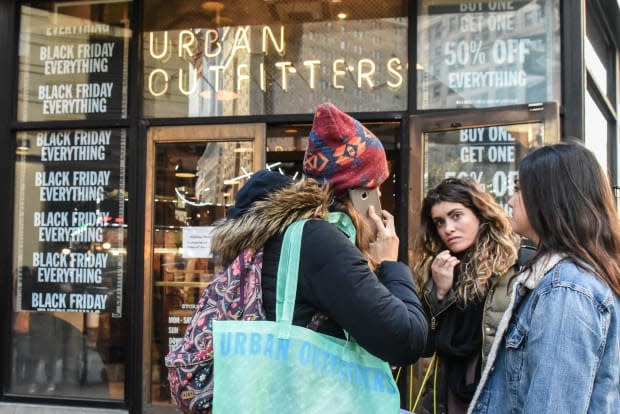Just as Things Were Looking up for Urban Outfitters, Store Traffic Is Back Down
Luckily, online sales are still strong.

Like so many "mall brands," Urban Outfitters was once the retailer of choice for a certain demographic of teens and young adults seeking to achieve the cool aesthetic of the moment, but it struggled for a few years with declining foot traffic in stores and an assortment that missed the mark. Older-sister brand Anthropologie faced similar issues. But in 2018, it looked like things were finally turning around: Store traffic was back up while online sales swelled and the product finally aligned with the '90s-inspired aesthetic kids are after these days. In the first quarter of fiscal 2019, or the three months ending April 31, 2018, comparable store sales were up at Urban Outfitters, Anthropologie and Free People (which had been doing pretty well all along) — the first quarter in four years that all three saw improvements.
Unfortunately, through some outside forces and some fault of its own, the company wasn't all able to keep that momentum up through to the end of the fiscal year. Overall, URBN didn't do too poorly: Net sales for the year increased 9.3 percent to $4 billion, while comparable sales increased 8 percent. For the fourth quarter specifically, comparable sales were up 3 percent.
The gist of a conference call executives had with investors Tuesday afternoon was that while the company got off to a strong start last year, it ended on a weaker note. While digital sales were up a double-digit percentage, store traffic was down significantly at Urban Outfitters, specifically. The company blamed Brexit and general economic uncertainty all over the world for causing not only a major slowdown in European stores, but also poor performance in Urban stores in major tourist areas in the United States.
At Anthropologie, lower store traffic was fortunately offset by growth in wholesale, a relatively new segment for the brand: It began wholesaling its furniture and home goods with retailers like Nordstrom, which it plans to increase this year. Anthro has also found success by selling a selection of pieces from Free People's activewear brand FP Movement, and in March it will debut a plus-size offering called A+ that will likely perform well.
While Free People was the only brand that saw an improvement in store traffic, its overall growth slowed due to an intentional move on the company's part to reduce promotions and decrease off-price sales. It's something retailers often do to increase full-price sales which bring in higher profit margins. Future plans for Free People include expanding further into international markets like Europe, where it just opened its first two stores (in Amsterdam and London).
URBN CEO Richard Hayne concluded the call by saying that, basically, things have cooled off a bit since that gangbusters first quarter last year. Putting it in meteorological terms, he declared, "Over the past year I've talked about strong tailwinds and a change in fashion silhouette as forces favorably impacting our business. Today I believe those winds would be more accurately characterized as gentle breezes — still positive, but certainly less impactful."
Consumer sentiment is above the company's 40-year average, but below where it was last spring/summer. The "new fashion silhouette" is still driving demand, he said, but not being embraced with as much "exuberance" as it was last year. He also added that all brands made "costly mistakes" when it came to their winter-to-spring transition offerings (always a tricky time for retail). However, he assured, things are on track to improve, especially since the company has ramped up its factory speeds so that it can adjust its assortments more quickly than ever.
And as far as big retail chains go, things don't look too bad URBN. I mean, it's not like it's Gap or anything.
Never miss the latest fashion industry news. Sign up for the Fashionista daily newsletter.
